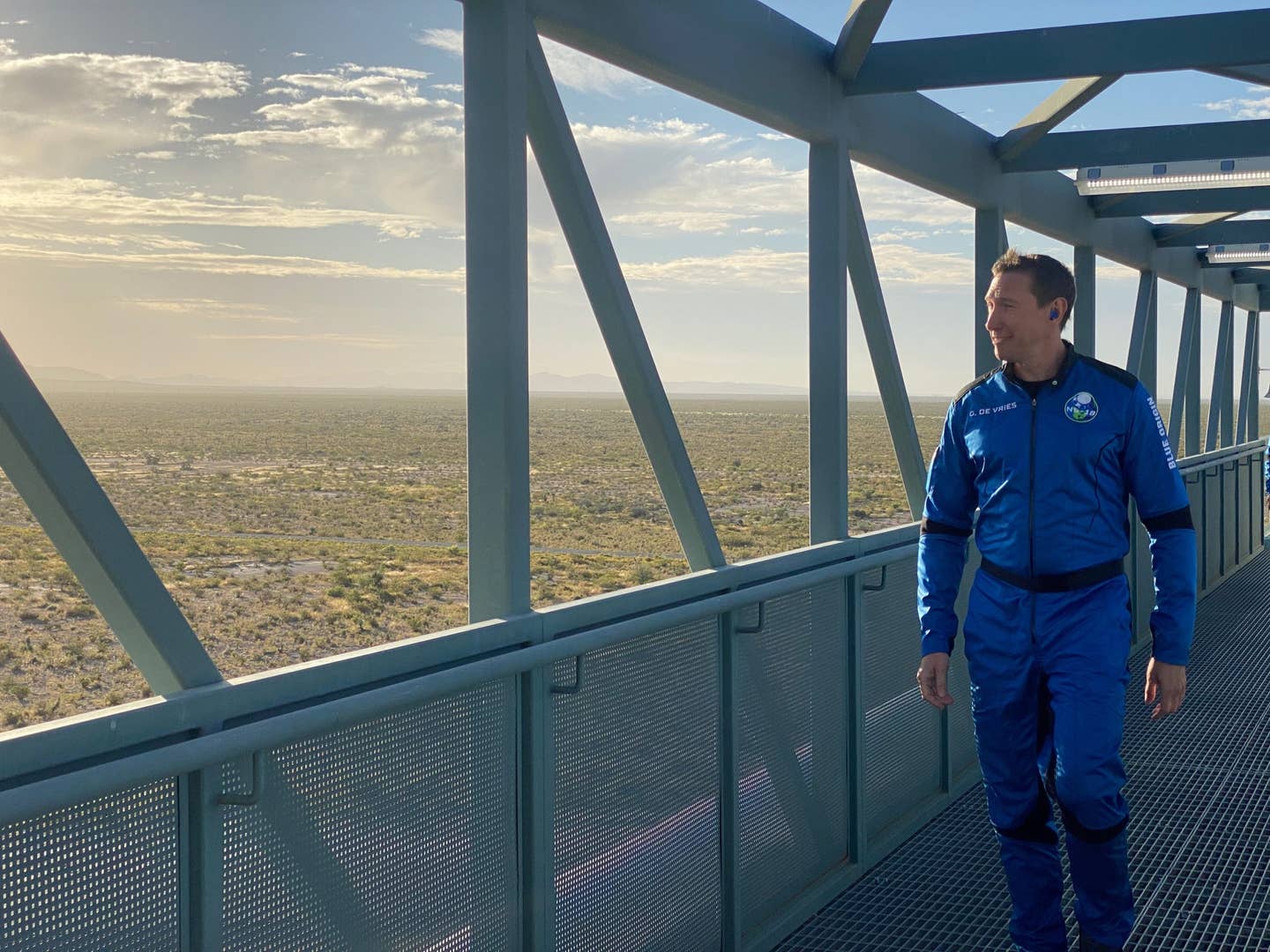NTSB: No Sign of Malfunction in Accident That Killed Blue Origin Astronaut
Glen de Vries and his instructor died a week after de Vries traveled to space with actor William Shatner.

In addition to a software executive, Glenn de Vries was a Blue Origin astronaut. Courtesy: Blue Origin
The NTSB’s preliminary report on the accident that took the life of software executive turned astronaut Glen de Vries says there was no obvious sign of a mechanical malfunction that would have precluded normal aircraft operation.
De Vries and his flight instructor, Thomas Fischer, the founder and chief instructor at Fischer Aviation, died on November 11, 2021, when the Cessna 172S Skyhawk they were flying crashed near Branchville, New Jersey. A week earlier de Vries made the trip to space aboard a Blue Origin rocket alongside actor William Shatner.
The report from the NTSB does not state which man was at the controls at the time of the accident. De Vries earned his private pilot certificate at Fischer Aviation in 2016.
Investigators are studying the flight track data obtained from OpsVue, a commercially available web-based product.
The data shows the aircraft departed Essex County Airport (KCDW), in Caldwell, New Jersey, at about 10:30 a.m.,heading northwest. The aircraft was bound for Sussex Airport (KFWN), a distance of approximately 40 nm. The aircraft climbed to an altitude of 6,400 feet MSL before entering a steep, descending left turn that continued until radar contact was lost.
The weather at the time of the accident was reported as clear skies and light winds. At the time of the flight, the temperature at the surface was reported as 11 degrees Celsius.
The aircraft came to rest in a wooded area near Branchville, New Jersey. Several trees near the accident site exhibited fresh cuts consistent with propeller strikes.
The NTSB report indicates that all major components of the airplane were located at the scene. There was no fire.
The wreckage was located about an hour after the aircraft was reported missing. Both men were pronounced dead at the scene.
The NTSB notes that accident investigations usually take between a year and 18 months to reach their conclusion, at which time the probable cause of the accident is determined.

Sign-up for newsletters & special offers!
Get the latest FLYING stories & special offers delivered directly to your inbox






